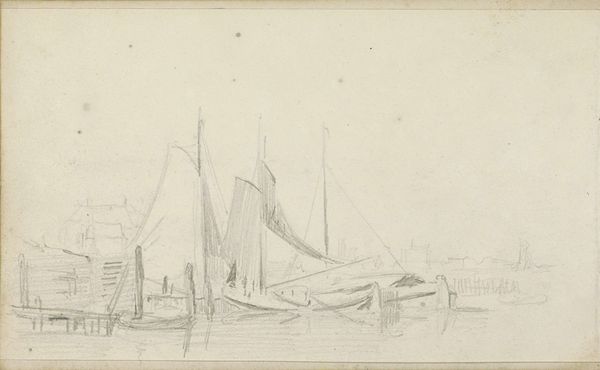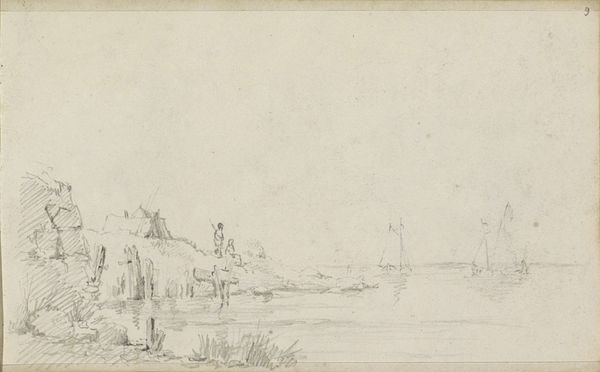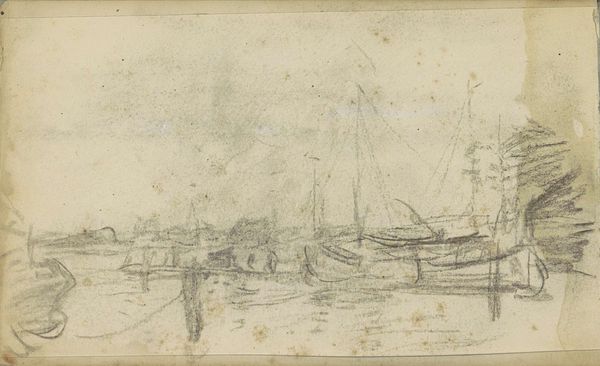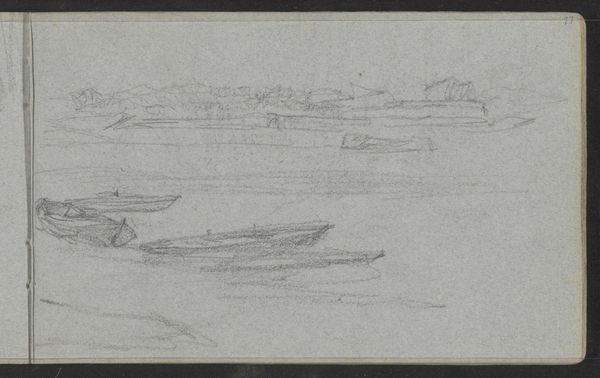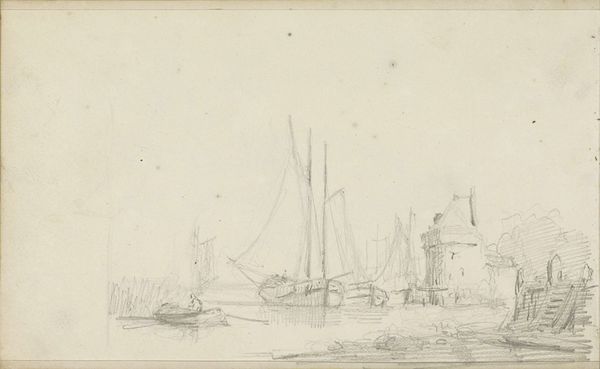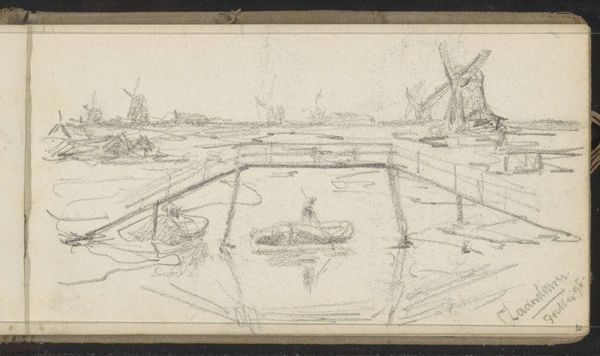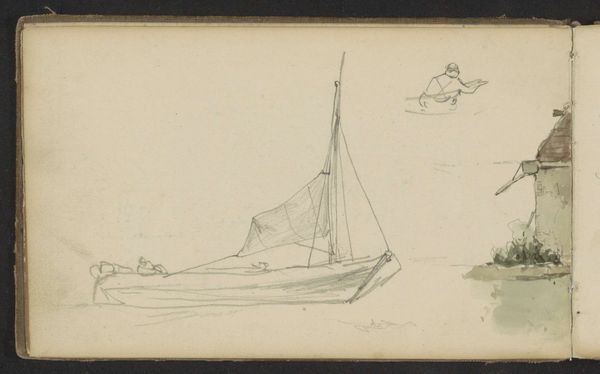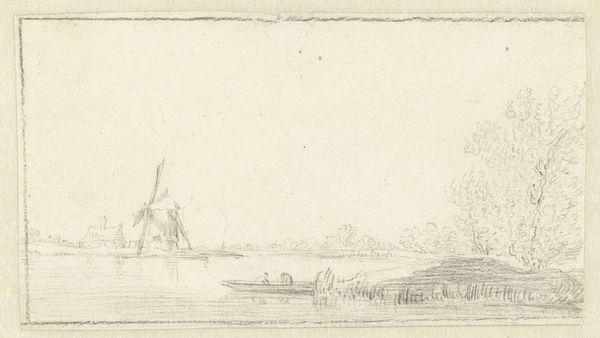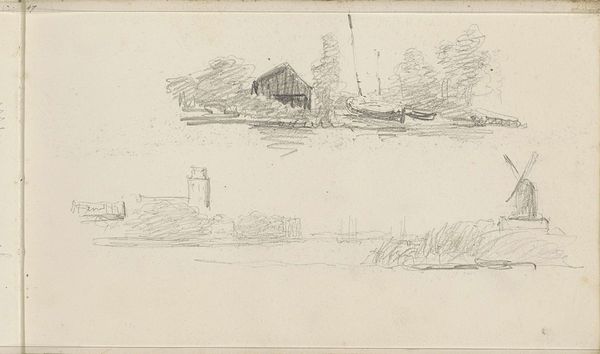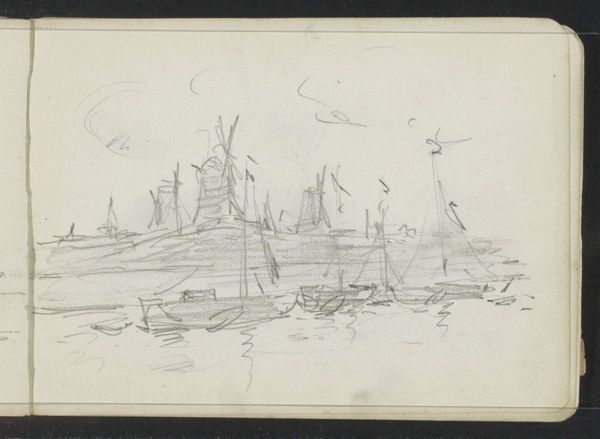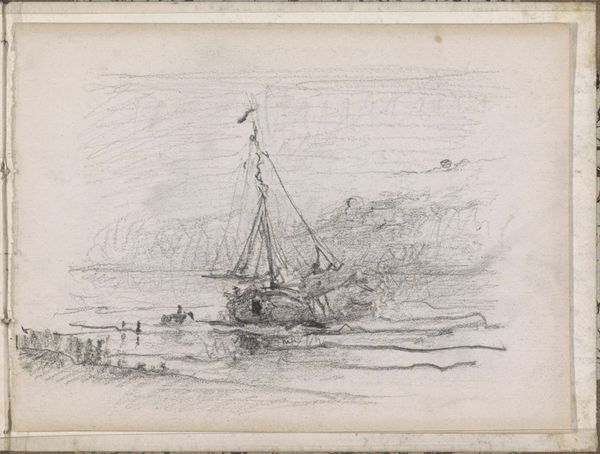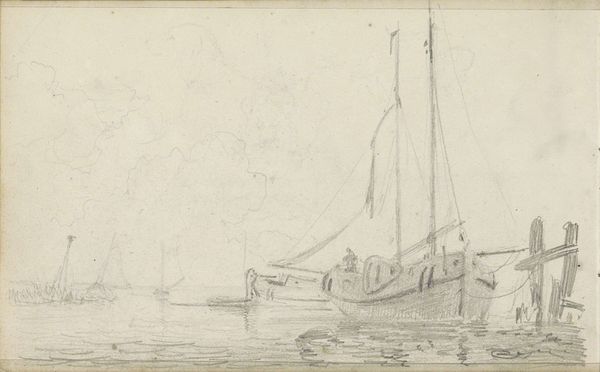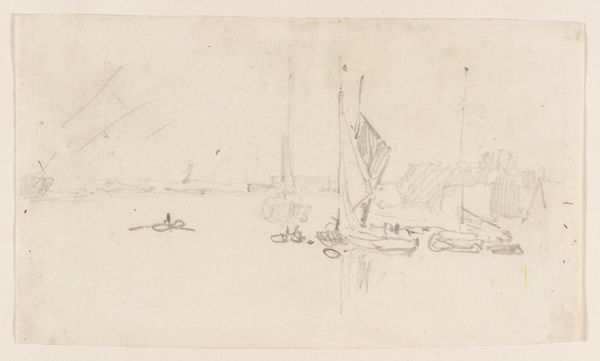
Dimensions: height 104 mm, width 179 mm
Copyright: Rijks Museum: Open Domain
Willem Cornelis Rip sketched "Molens aan de Zaan" with graphite, a simple yet profound medium. Here, windmills stand as silent sentinels along the Zaan River, their iconic forms deeply woven into the cultural landscape of the Netherlands. The windmill, a symbol of Dutch ingenuity and resilience, transcends its practical function of milling grain or pumping water. Consider how Don Quixote tilted at windmills, mistaking them for giants—a potent metaphor for the struggle against overwhelming forces. Yet, in Dutch art, these structures often evoke a sense of national pride and prosperity, reflecting a mastery over nature. Notice how the artist has returned to this image over and over throughout history. This recurring motif reveals the ways in which the collective consciousness continues to seek stability, purpose, and connection to the earth. As viewers, we are drawn into this visual dialogue, echoing the emotional and psychological resonance the image has carried through generations.
Comments
No comments
Be the first to comment and join the conversation on the ultimate creative platform.
